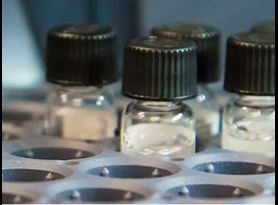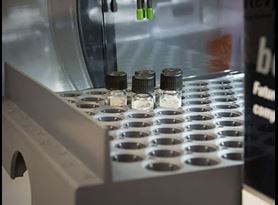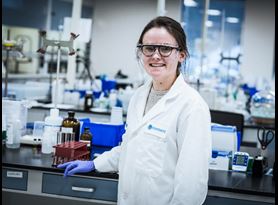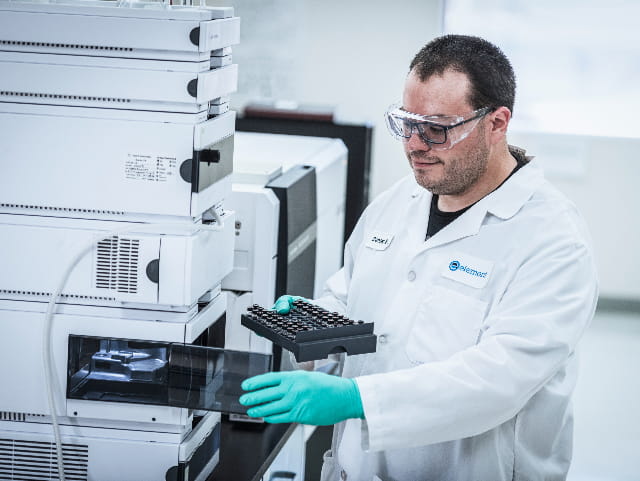Element’s complete reference standard management program supports small molecule drugs, biologics and biosimilars with reference standard characterization for structure and purity, periodic requalification, and reference standard storage and distribution.
Qualified reference standards serve as validated baseline materials to satisfy regulatory requirements for purity, both confirming the purity of a drug product and demonstrating control of product-related impurities (e.g., product degradation) and analytical method performance. Furthermore, manufacturers rely on qualified reference standards to assess the impact of manufacturing process changes on drug product, as well as for overcoming challenges that arise during manufacturing. When thorough and rigorous characterization of reference standards is carried out early in drug development, the investment will pay dividends as the product progresses to later stages, resulting in a significant impact on improved final product quality. Reference standard qualification, development, characterization and management are critical to delivering safe and efficacious therapeutics that can withstand regulatory scrutiny.
Non-compendial reference standard development services
Some well-characterized, high purity (>99.5%) compendial reference standards, also referred to as primary reference standards, are available for purchase from pharmacopoeias. Alternatively, in the absence of a readily available official source, regulatory guidance provided by the FDA must be followed for establishing a chemical as a reference standard. When developing and characterizing new reference standards, several challenges and considerations need to be contemplated and overcome, including operational efficiency and reliability. It is not uncommon for drug developers to find that compendial reference standards may not be available throughout pre-clinical and clinical development, including phase I lot release and phase II and/or phase III impurities testing. This is especially true for most large molecules and advanced biotherapeutics.
The synthesis, characterization, qualification and management of new non-compendial reference standards may be challenging for an in-house pharmaceutical team. Element’s team of knowledgeable scientists have a proven track record of success synthesizing, characterizing and qualifying non-compendial reference standards as a result of proprietary compounds, generic drug applications, extractables and leachables studies, and other instances where compendial reference standards are not readily available.
Reference standard requalification, storage and distribution
Typically, annual requalification is recommended for reference standards, however, depending on how the reference standard is put to use, the analytical procedure for requalification may be less involved than the initial qualification process. Reference standards that are used for chemical identification generally require a less stringent requalification, consisting of identification testing using NMR or FT-IR and comparing that data to the initial dataset generated during initial characterization. Likewise, if the standard is being used for purity testing, purity must be reassigned. Due to the risk of moisture absorption and degradation, full purity testing is needed.
In addition to requalification services, Element offers storage and distribution services, which are particularly valuable for virtual pharmaceutical companies that do not have the capacity or desire to store reference materials. GMP procedures are observed for all reference standard management programs, including proper storage conditions, requalification schedules and shipment.
Biologics and biosimilars reference standard characterization
Biopharmaceutical drugs have more complex structures than small molecule drugs, and full characterization is often not achievable. Therefore, a broad range of analytical tests (e.g., cell-based potency and chromatographic assays) are often employed to assess quality attributes of active ingredients and drug products, including characterization, comparability, lot release and confirmation of stability. Reference standards calibrate and confirm the suitability of these tests, as well as provide a benchmark for subsequent testing by establishing a standard physicochemical profile of an originator biologic product or biosimilar.
When possible, pharmacopeial standards are used as primary reference standards. However, in-house reference standards are established for various purposes, including quantitative comparative analytical methods for determination of biological activity, qualitative analytical methods for purity testing, and performance control assays to evaluate system suitability. In-house reference standards are also used for batch release, stability, characterization studies and comparability assessments. General regulatory expectations for reference standards of biologics are outlined in ICH Q6B, Q2(R1), and Q7A and should be considered during the development and application of reference standards.
Element’s deep understanding of the regulatory landscape, proven success overcoming challenges unique to complex large molecule product development, and in-depth scientific expertise have formed the foundation of our comprehensive reference standard characterization services for biologics and biosimilars, tailored to meet the specific needs of your product. Ensure reference standards are appropriately stable, suitable for their purpose, qualified according to schedule, and represent any applicable previous reference standard material used in pivotal clinical studies with Element as your CDMO partner.
The Element advantage
Confidently meet regulatory requirements with Element’s reference standard characterization, qualification and management programs customized to meet the unique needs of your drug product. To learn about our complete reference standard qualification, characterization, and management programs for pharmaceuticals, biologics, and biosimilars, or to speak with one of our experts, contact us today.
Learn more

CMC Product Development Services
Our CMC product development services include formulation development, parenteral and topical product development, microbiology testing services, and consultancy.

Chemistry, Manufacturing, and Controls (CMC) Consulting Services
We provide consulting services for Chemistry, Manufacturing, and Controls (CMC) product development in the pharmaceutical and biotechnological industries.

Pharmaceutical Method Development and Research
Element provides a full suite of pharmaceutical method development and research services to bring your products to market at optimal speed.

Compendial Testing
ICH, USP, EP, BP and JP monograph tests of raw material, drug substance/product, starting material, cell banks, vectors, bulk harvest and control cells.

